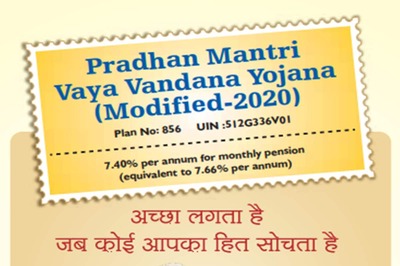
views
'Four wheels move the body, two wheels move the soul,'the lines are completely apt for the thrill that motorcycle rides offer. But with the thrill also comes a degree of uncertainty. Unlike cars where you have four wheels ensuring a balance most of the time, bikes' two wheels make it more prone to unbalancing in event of emergency braking. However, the chances of falling also depend on the engineering and braking system used by the company. Additionally, the rider's skill, weight distribution and the overall weight of the two-wheeler has a key role. Here we look at things that the biker must take care of for effective braking:
Bikes brakes are primarily divided into two categories, discs and drums. While drum brakes are a comparatively older concept, discs are new and are being seen on all the latest motorcycle models.
Drum brakes are low maintenance because of the fact that they don't have a fluid that needs regular change but that there's also negative aspects to them. Drums are an enclosed system where there is no scope for heat release. So,when the braking generates heat due to the friction, it doesn't get the outlet. The heat in brakes creates energy called brake fade that lessens the stopping power of the braking system.
Discs, on the other hand, have the advantage of being in the open. They also have little holes referred to as 'petals' to disperse heat the most efficiently. The presence of More pistons in the brake callipers on disc brakes also translate to better-stopping power.
Things to keep in mind for effective
For effective application brakes, the rider should have a habit of using a clutch with effect. Using the clutch simultaneously while applying the brake allows to cut power transfer to the wheel and keep the engine running. Additionally, to avoid the need to keep the track of gear, the rider while applying the brake in an emergency should tap down to the first gear.
Now, if the vehicle is stopped completely, the biker should always be in first gear to use all the power when there's a need to go again suddenly.
Know when to use which break
For effective braking, it's also important to know where should the front and rear brakes should be used.
Front brakes are usually used for stopping, rollback on a slope in case of emergency. For effective braking, the front brake should be utilised in a gradual squeeze and putting pressure until there's nothing more to squeeze. Riders should keep the standard riding stance, with knees and thighs clutching the tank and the upper body relaxed but firm.
Rear brakes are generally used for reducing speed while going slower. The rear brakes should be used in combination with the front to slow down in emergencies.
Mistakes to avoid:
– Don't duck walk: Duck walk is when the rider uses his both legs to balance and walk the bike forward. However, doing this indicates that the rider may not be in full control of the bike.
– Don't grab the brakes harshly: Sudden and harsh application of brakes can result in disbalance and may cause fall.
– Don't hover over the levers: Having your hands hovering over the lever can be dangerous in emergency situations. In a panic, it may result in the sudden application of brakes
Maintenance Check:
– Check the brake fluid colour regularly.
– Check brake pads and discs for warping or wear.
– Check tyre pressure before a ride.
– Check tyre for wear and tear
Also Watch:
Have a safe ride and always wear your helmet!
Source
Read all the Latest Auto News here
















Comments
0 comment